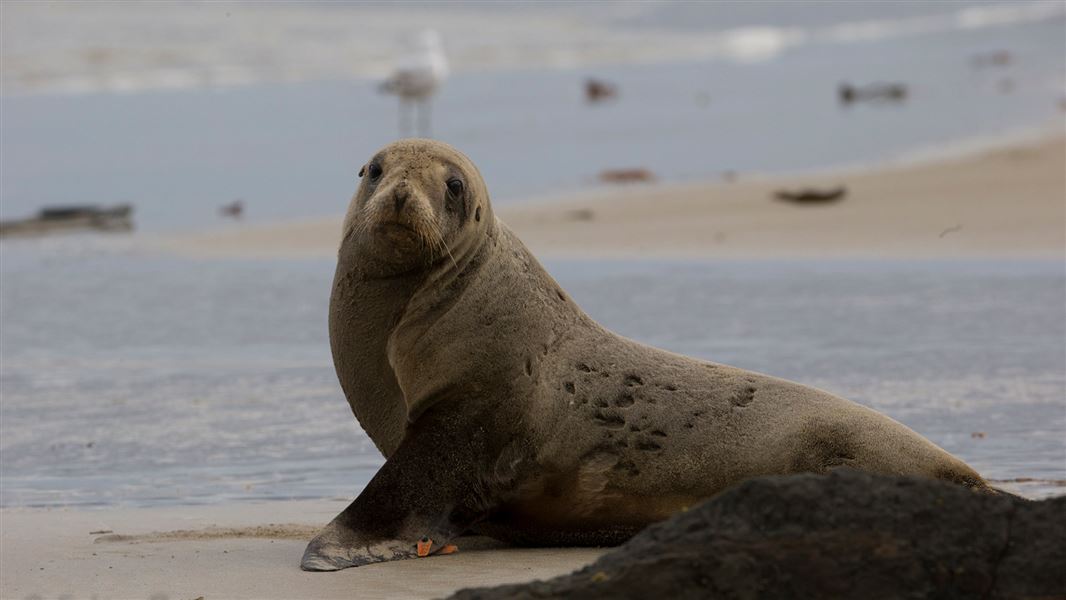Historic distribution
New Zealand sea lion remains have been collected and studied from Fiordland to East Otago, Cook Strait, South Taranaki, and on the east coast of the North Island from the Coromandel Peninsula to Northland. The presence of sea lions in northern North Island can’t be proved after about 1500, so it is believed they disappeared from that area.
The sea lion breeding range probably extended into the North Island, but evidence of juvenile and female remains have not been found further north than Nelson.
Sea lion remains in excavations and historical records indicate that both Māori and European settlers hunted sea lions and distributional changes can probably be attributed to human predation.
European sealing
Whalers arrived at the Auckland Islands in 1806 and New Zealand sea lions were hunted for their pelts for around 24 years – until there were no longer enough sea lions left to support the trade. Fur and ‘seal oil’ were valuable products in Europe and America and commercial activity was quickly established.
Fur seals skin was more valuable than that of sea lions, but there was an intensive activity on both species, along with other seals in New Zealand and Australia. Cargo records identify 5,769 sea lion skins from the West Coast, southern New Zealand, Auckland Islands, Campbell Islands, Antipodes Islands and New Zealand coasts, though this number might be higher.
By mid-1830 this industry lost interest in these areas due to the small population of these species, although there are records of shipments with smaller numbers of New Zealand sea lion skins until 1894.
Subantarctic islands distribution
Records show that plundering by European sealers drastically reduced the number of sea lions in southern New Zealand and until recently they have been reported on the mainland only as stragglers from the subantarctic islands.
E A Wilson reported seeing 'numerous sea lions' on the Auckland Islands when he visited in 1904. In his diary he wrote that there were about 200 on the beach of Sandy Bay and that there were more animals in the scrub. He also saw two young sea lions that had been born the previous breeding season. This is the earliest record of sea lions breeding, since the population was depleted from sealing in the 19th century.
The threat management plan for New Zealand sea lion describes the work plan to manage the threats, promote the recovery and ensure the long-term viability of New Zealand sea lions, with the ultimate goal of achieving ‘Not Threatened’ status.
